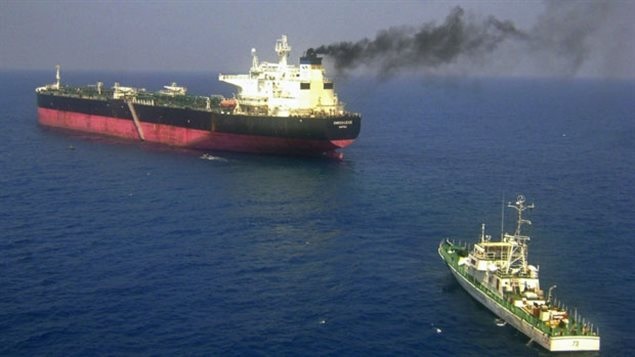For years Canadian organisations and others have been calling for Arctic shipping to stop the use of the heavy fuel oil (HFO), also known as bunker fuel, in commercial ships.
This is the cheapest fuel available and emits a high level of carbon (soot) and sulphur dioxide.
Both of these contribute to warming and melting of ice, while sulphur also contributes to health issues like asthma. The soot falls on the snow and ice and holds heat from the sun increasing warming by as much as 30 per cent and contributes to ice retreat.

- An example of a cargo ship emitting black, sulphur dioxide and soot-laden smoke from burning HFO (bunker fuel) THE IMO says ships must use fuel with reduced sulphur content by 2020 in the Arctic Photo: Indian Navy/Associated Press
The International Maritime Organisation (IMO) is the U.N. agency which governs and regulates safety and security of shipping and the prevention of marine pollution.
Last week the IMO made a large step in that direction by requiring all maritime shipping to cut sulphur content of fuel from 3.5 per cent sulphur content to 0.5 per cent by 2020.
At an April meeting the IMO is likely to decide that other shipowners would be required to install “scrubbers” by 2020 if they continue to use HFO.
In a press release the NGO Clean Arctic Alliance lead advisor Dr Sian Prior applauded the IMO decision but added, “while the sulphur cap will reduce the amount of heavy fuel oil being used anywhere – including in the Arctic – it will not eliminate it completely. We’re calling on the IMO to make progress towards a ban on HFO at this April’s MEPC meeting, to protect the Arctic from the world’s dirtiest fuel.”
Prior also noted that low-sulphur fuel was a much better option than the potential use of scrubbers by shipowners continuing to use HFO.
She said, “scrubbers are an end-of-pipe technology, which produces a residue (sludge and wash-water) from the cleaning process that needs to be disposed of – and there is concern that scrubber residue and wash-water could end up being dumped in the ocean”.
Another NGO, Clean Shipping Coalition (CSC). Pointed out another loophole in the IMO ruling concerning enforcement of the ruling. In a statement the group said, “Ships will be banned at that time from burning any marine fuel with a sulphur content above 0.5%, but the ban does not prevent ships from carrying fuel exceeding the 0.5% limit. This opens up the possibility of massive avoidance by unscrupulous operators when operating out of sight on the high seas.”
That loophole could be closed at the April meeting of the IMO which has recommended the carriage of high sulphur fuels..
John Maggs, senior policy advisor at Seas At Risk and president of the CSC, said: “This is an important development that closes a serious loophole in the original agreement. Banning the carriage of non-compliant fuel will make it considerably more difficult for unscrupulous ship operators to ignore the rule, burn cheaper non-compliant fuel, and escape serious sanction. This decision, which must be confirmed by the IMO in April, will mean a cleaner environment and fewer premature deaths from ship air pollution.”
It is estimated that 42 per cent of ships operating in the Arctic currently use HFO, including fishing vessels, cargo ships, and service vessels. These however carried 75 per cent of the HFO burned in the Arctic.
With retreating ice, there is a concern that more shipping will travel through the Northwest passage.
additional information sources:






For reasons beyond our control, and for an undetermined period of time, our comment section is now closed. However, our social networks remain open to your contributions.